Menu
- Home
- Internal & External Doors, Frames & Skirtings
- All Ironmongery By Brand
- Door Furniture By Category
- Hinges, Sliding Gear, Door Closers & Controls
- Locks & Security Devices for Doors, Gates & Cubicles
- Panic, Fire, Smoke, Weather & Ventilators
- Cabinet Fittings, Wardrobe Rails & Shelving
- Window Fittings, Draught Proofing & Security
- Bathroom, Electrical, Curtain & Household
- Fixings, Tools & Consumables
- Quick Order Form
- Contact Us
- Terms & Conds
- Login
- Home
- Phone: 0131 444 1149
- Quick Order Form
- Contact Us
- Terms & Conds
- Login
Which Door Closer Is Right For The Job?
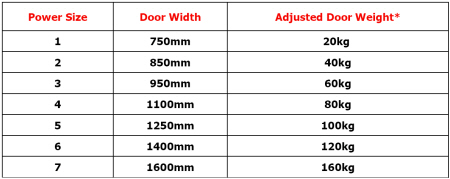
Here you will find information to help you select the right door closer. If you need any additional help please give us a call on 0131 444 1149.
Door closers are defined as: MECHANICAL DEVICES TO AUTOMATICALLY CLOSE A DOOR AFTER IT HAS BEEN OPENED AND RELEASED BY SOMEONE PASSING THROUGH.
NOTES on REGULATIONS GOVERNING THE USE OF SELF CLOSING DEVICES: CE MARKING, As described by Intertec. "Before products can be sold on the European market they must fulfil the requirements of relevant European product directives and bear the CE Marking. When a manufacturer affixes the CE Marking to its products it certifies to the authorities that the product meets the EU safety requirements. CE Marking does not give the consumer any information, as it says nothing about the quality of the product. The CE Marking does not show any evidence of third party testing and should not be confused with any third party certification mark". For more information please refer to the Intertec website.
CERTIFIRE: As described by CERTIFIRE, Warrington. "CERTIFIRE differs from CE Marking in that CE Marking indicates compliance with the minimum regulatory requirements, whereas CERTIFIRE approval indicates that a product meets a more stringent set of standards. This independent third party product certification is at a higher level; a quality mark, designed to enable manufacturers to clearly demonstrate a difference and superiority to those which have achieved the basic CE Marking standards." For more information please refer to the Certifire website. BS8300 - 2001
"The design of buildings and their approaches to meet the needs of disabled people."
ADM - APPROVED DOCUMENT M - 2004 EDITION "The guidance is based on the recommendations of BS8300, the regulations no longer refer to disabled people. The aim of ADM is to foster a more inclusive approach to design to accommodate the needs of all people. Part M will now apply to material alterations and extensions of non-domestic buildings." For more information please refer to the ADM website.
SENDA: University of Bath - Special Educational Needs and Disability Act 2001 (SENDA): For the full text please refer to their web page. "The Special Educational Needs and Disability Act (2001 extended the scope of the Disability Discrimination Act 1995 to include educational providers. This Act made it unlawful to discriminate against disabled students or other disabled people by treating them less favourably than others."
BS EN 1154 - The British standard for door closers.
The following lists in alphabetical order, the different types of door closer or door closer function available. Although abbreviated, for accuracy some of the descriptions are taken verbatim from the following publications: DORMA publication: "Guidance and Design Solutions for Internal and External Doorsets", the "JEBRON DOOR CLOSER DESIGN GUIDE" and "ARROW ARCHITECTURAL SAFETY IN ACTION" Please refer to these publications for the full text.
BACKCHECK: Specify if required. The purpose of this function is to prevent the door, frame or walls being damaged if the door is aggressively opened either by throwing, barging through or in the case of external doors, which open out, being blown open by the wind. Backcheck is achieved by incorporating a hydraulic buffer within the door closer mechanism. The backcheck obviates the need for floor mounted stops in situations where they may be dangerous or impractical. At other locations where it is convenient to fit a door stop it is helpful to do so.
CAM ACTION: Cam action overhead door closers provide the following benefits: They can achieve the requirements of ADM & BS8300 compliance within a greater tolerance than traditional rack and pinion mechanism door closers. They are designed for use with slide arm and channels, which not only look better than projecting scissor arm installations, they operate more smoothly and because they are less obtrusive they reduce the risk of vandalism. In addition, there are no visible fixings on the closer mechanism or the slide channel, which can be tampered with.
DELAYED CLOSING ON MANUALLY OPERATED DOORS: The delayed action function allows the door leaf to remain open, for an adjustable period of time, before closing. It is used on doors frequented by the elderly or people with disabilities. Also useful for doors where trolleys and bulky goods are being manipulated through a door. Can be used on fire resisting doors since it holds the door open for short periods of time. Typically up to 20 seconds of delay can be achieved between 90 - 70 degrees.
ELECTROMAGNETIC SWING FREE: Compliant with the requirements of ADM and BS8300, the electromagnetic swing free door closers are designed to operate with no resistance when the door is opened. They allow the door to be opened to any position as if no closer were fitted. Upon activation of the fire alarm or a power failure (fail safe) the swing free device will close the door from any position and act like a normal door closer until the alarm is de-activated or the power restored. Available as a floor spring or as an overhead closer. As well as being interlinked to the fire alarm system it is essential that electromagnetic door closers are used in conjunction with smoke detectors on both sides of the door.
ELECTROMAGNETIC HOLD OPEN: Electromagnetic door closers are connected to the fire alarm system and allow a door to be held open during normal use. When activated by the fire alarm or a power failure, the door closer is released and the door closes securely. They perform as a normal door closer until the alarm is deactivated or the power restored. This function is available on floor springs, concealed closers and overhead closers. As well as being interlinked to the fire alarm system it is essential that electromagnetic door closers are used in conjunction with smoke detectors on both sides of the door.
LATCHING ACTION: A standard function on all good door closers, the latching action accelerates closure through the last few degrees to overcome the resistance of a seal or latch. Warning: to use this function in order to fully latch the door may contravene the Building Regulations. The door should latch from any angle. To test this, the door should be opened very slightly and released. In the event of failure to latch the reason should be identified and corrected.
MECHANICAL HOLD OPEN: This device allows the door to be held open at a predetermined angle, usually 90 degrees. Due to it having to be released by hand it is essential that it is not used on fire resisting doors because the door will remain open, even if a fire should break out.
RACK and PINION MECHANISM: The traditional type of door closer mechanism, which can only operate efficiently with projecting scissor type arms. In circumstances where there is a possibility of vandalism, the projecting arm is vulnerable and as well as the arm being damaged, the closer and the door could sustain consequential damage. Door closers with this type of mechanism are the most commonly used.
COIL SPRING: Consisting of a coiled wire spring for fixing slightly diagonally on the hanging edge of a door by a face-fixed bracket, holding one end of the spring on the door and another bracket, holding the other end of the spring on the door-frame. Suitable for garden gates or similar applications.
CONCEALED: Available as Overhead Door Closers, which fit into the top rail of the door and are fully concealed when closed. Single and double action available. Transom Closers - the mechanism is mortised into the top of the door-frame (at least 150x76mm frame needed) with just the cover plate showing. A bottom pivot sits on the floor. Can be used for single and double action doors. Floor-Spring - the mechanism with its projecting spindle is sunk into a specified size of hole in the floor with just the top plate showing when the door is mounted. The door pivots on the spindle and a shoe mortised into the bottom rail of the door, with a two piece top centre with one piece mortised into the top rail of the door, and the other into the top of the frame. Non-handed, can be used on single or double action doors. Mid Door Style positioned closers. Available with and without hydraulic check action.
FLOOR SPRING: Available in single and double action - some models do both. The floor spring kit comprises of a cement-in box containing the spring unit, which has an integral spindle, a bottom shoe which fits on to the spindle, a top cover plate to conceal the mechanism and a top centre pivot which supports the top of the door. Hinges are not required. Width and weight of door determines closing force strength required. They are the most suitable means of mechanically closing double action doors and are good protection against vandalism.
HAWGOOD HINGES: Suitable for single and double action purposes the Hawgood spring hinges act as hinges and door closer. They provide quick acting, non-check action door closing and are available for door thicknesses from 20 - 50mm, weights from 22 - 100 Kg and door widths up to 930mm. Each hinge has a shoe, which the door slides into and the shoe is swivel linked to a backplate, which screws to the door-frame. The spring (s) is (are) contained in a tube (tubes) fixed to the rear of the backplate and provision has to be made to accommodate the tubes in the door-frame. If the frame is not thick enough to take the tube an additional recess has to be made in the wall. In the larger sizes the shoe is made from stainless steel with the back plate zinc plated. An alternative stainless steel backplate is available when the closers are used in food areas or externally. The smaller sizes are made from cast brass either polished or nickel plated.
OVERHEAD DOOR CLOSER: Either mortised into or face fixed to the top rail of a door. Mechanisms include Cam action with slide channel for ease of opening and anti-vandal properties and Rack and Pinion with projecting arms. Available in different strengths to suit door weight and size.
PERKO: A small single spring non-check action door closer which is mortised into the hinge side of the door, with a small plate screwed to the surface of the door standard. The two are connected by a chain and as the door is opened the spring is tensioned causing the door to return to the closed position when it is released. Suitable for internal doors up to 50Kg / 110 lbs in light to medium use applications. A mortise of 150x22mm is required in the door to accommodate the unit.
PERKOMATIC: A double spring version of the PERKO designed for light to medium use situations on internal doors up to 75Kg / 165 lbs. Again the closing force is uncontrolled, but there is an adjustable hydraulic latching mechanism built into the closer. It requires a mortice of 170x60mm in the door to house the unit making it unsuitable for doors with mortise and tennon or dowelled midrail construction.
POWERMATIC: A slightly more powerful version of the above, but as well as having two strong springs it has a hydraulic check action to control the unit's closing force. Like the other closers there is an anchor plate screwed to the door standard, but instead of a chain, this closer has strong steel links to each spring, building up a powerful closing force. Tested to BS EN1154: 1997 power size 3 for doors up to 80Kg in weight and up to 950mm wide. BS EN 1634-1:2000 approved for use on half-hour and one-hour fire doors. It is CE Marked, CERTIFIRE and Document M Approved. A mortice in the door of 178x98mm is required to house the unit. Unsuitable for use on doors with a mortise and tennon or dowelled midrail construction.
SPRING HINGES (BOMMER HINGES: Single or double un-controlled closing action, the tube shaped knuckle (knuckles) contain helical torsion springs which can be adjusted to increase or decrease the spring tension by using a tommy bar to incrementally revolve the tensioning collar and replacing the stop plug in the required hole in the collar. After opening and releasing the door it will automatically return to the closed position. Due to not having any check action this method of door closing is noisy, particularly when used in the single action mode. Available from 75 - 300mm long, for doors from 18 - 75mm thick. The range of finishes include: painted steel, plated steel, brass, brass plated and stainless steel.
Door closers are defined as: MECHANICAL DEVICES TO AUTOMATICALLY CLOSE A DOOR AFTER IT HAS BEEN OPENED AND RELEASED BY SOMEONE PASSING THROUGH.
NOTES on REGULATIONS GOVERNING THE USE OF SELF CLOSING DEVICES: CE MARKING, As described by Intertec. "Before products can be sold on the European market they must fulfil the requirements of relevant European product directives and bear the CE Marking. When a manufacturer affixes the CE Marking to its products it certifies to the authorities that the product meets the EU safety requirements. CE Marking does not give the consumer any information, as it says nothing about the quality of the product. The CE Marking does not show any evidence of third party testing and should not be confused with any third party certification mark". For more information please refer to the Intertec website.
CERTIFIRE: As described by CERTIFIRE, Warrington. "CERTIFIRE differs from CE Marking in that CE Marking indicates compliance with the minimum regulatory requirements, whereas CERTIFIRE approval indicates that a product meets a more stringent set of standards. This independent third party product certification is at a higher level; a quality mark, designed to enable manufacturers to clearly demonstrate a difference and superiority to those which have achieved the basic CE Marking standards." For more information please refer to the Certifire website. BS8300 - 2001
"The design of buildings and their approaches to meet the needs of disabled people."
ADM - APPROVED DOCUMENT M - 2004 EDITION "The guidance is based on the recommendations of BS8300, the regulations no longer refer to disabled people. The aim of ADM is to foster a more inclusive approach to design to accommodate the needs of all people. Part M will now apply to material alterations and extensions of non-domestic buildings." For more information please refer to the ADM website.
SENDA: University of Bath - Special Educational Needs and Disability Act 2001 (SENDA): For the full text please refer to their web page. "The Special Educational Needs and Disability Act (2001 extended the scope of the Disability Discrimination Act 1995 to include educational providers. This Act made it unlawful to discriminate against disabled students or other disabled people by treating them less favourably than others."
BS EN 1154 - The British standard for door closers.
The following lists in alphabetical order, the different types of door closer or door closer function available. Although abbreviated, for accuracy some of the descriptions are taken verbatim from the following publications: DORMA publication: "Guidance and Design Solutions for Internal and External Doorsets", the "JEBRON DOOR CLOSER DESIGN GUIDE" and "ARROW ARCHITECTURAL SAFETY IN ACTION" Please refer to these publications for the full text.
DOOR CLOSER FUNCTIONS
BACKCHECK: Specify if required. The purpose of this function is to prevent the door, frame or walls being damaged if the door is aggressively opened either by throwing, barging through or in the case of external doors, which open out, being blown open by the wind. Backcheck is achieved by incorporating a hydraulic buffer within the door closer mechanism. The backcheck obviates the need for floor mounted stops in situations where they may be dangerous or impractical. At other locations where it is convenient to fit a door stop it is helpful to do so.
CAM ACTION: Cam action overhead door closers provide the following benefits: They can achieve the requirements of ADM & BS8300 compliance within a greater tolerance than traditional rack and pinion mechanism door closers. They are designed for use with slide arm and channels, which not only look better than projecting scissor arm installations, they operate more smoothly and because they are less obtrusive they reduce the risk of vandalism. In addition, there are no visible fixings on the closer mechanism or the slide channel, which can be tampered with.
DELAYED CLOSING ON MANUALLY OPERATED DOORS: The delayed action function allows the door leaf to remain open, for an adjustable period of time, before closing. It is used on doors frequented by the elderly or people with disabilities. Also useful for doors where trolleys and bulky goods are being manipulated through a door. Can be used on fire resisting doors since it holds the door open for short periods of time. Typically up to 20 seconds of delay can be achieved between 90 - 70 degrees.
ELECTROMAGNETIC SWING FREE: Compliant with the requirements of ADM and BS8300, the electromagnetic swing free door closers are designed to operate with no resistance when the door is opened. They allow the door to be opened to any position as if no closer were fitted. Upon activation of the fire alarm or a power failure (fail safe) the swing free device will close the door from any position and act like a normal door closer until the alarm is de-activated or the power restored. Available as a floor spring or as an overhead closer. As well as being interlinked to the fire alarm system it is essential that electromagnetic door closers are used in conjunction with smoke detectors on both sides of the door.
ELECTROMAGNETIC HOLD OPEN: Electromagnetic door closers are connected to the fire alarm system and allow a door to be held open during normal use. When activated by the fire alarm or a power failure, the door closer is released and the door closes securely. They perform as a normal door closer until the alarm is deactivated or the power restored. This function is available on floor springs, concealed closers and overhead closers. As well as being interlinked to the fire alarm system it is essential that electromagnetic door closers are used in conjunction with smoke detectors on both sides of the door.
LATCHING ACTION: A standard function on all good door closers, the latching action accelerates closure through the last few degrees to overcome the resistance of a seal or latch. Warning: to use this function in order to fully latch the door may contravene the Building Regulations. The door should latch from any angle. To test this, the door should be opened very slightly and released. In the event of failure to latch the reason should be identified and corrected.
MECHANICAL HOLD OPEN: This device allows the door to be held open at a predetermined angle, usually 90 degrees. Due to it having to be released by hand it is essential that it is not used on fire resisting doors because the door will remain open, even if a fire should break out.
RACK and PINION MECHANISM: The traditional type of door closer mechanism, which can only operate efficiently with projecting scissor type arms. In circumstances where there is a possibility of vandalism, the projecting arm is vulnerable and as well as the arm being damaged, the closer and the door could sustain consequential damage. Door closers with this type of mechanism are the most commonly used.
TYPES OF DOOR CLOSING DEVICES
COIL SPRING: Consisting of a coiled wire spring for fixing slightly diagonally on the hanging edge of a door by a face-fixed bracket, holding one end of the spring on the door and another bracket, holding the other end of the spring on the door-frame. Suitable for garden gates or similar applications.
CONCEALED: Available as Overhead Door Closers, which fit into the top rail of the door and are fully concealed when closed. Single and double action available. Transom Closers - the mechanism is mortised into the top of the door-frame (at least 150x76mm frame needed) with just the cover plate showing. A bottom pivot sits on the floor. Can be used for single and double action doors. Floor-Spring - the mechanism with its projecting spindle is sunk into a specified size of hole in the floor with just the top plate showing when the door is mounted. The door pivots on the spindle and a shoe mortised into the bottom rail of the door, with a two piece top centre with one piece mortised into the top rail of the door, and the other into the top of the frame. Non-handed, can be used on single or double action doors. Mid Door Style positioned closers. Available with and without hydraulic check action.
FLOOR SPRING: Available in single and double action - some models do both. The floor spring kit comprises of a cement-in box containing the spring unit, which has an integral spindle, a bottom shoe which fits on to the spindle, a top cover plate to conceal the mechanism and a top centre pivot which supports the top of the door. Hinges are not required. Width and weight of door determines closing force strength required. They are the most suitable means of mechanically closing double action doors and are good protection against vandalism.
HAWGOOD HINGES: Suitable for single and double action purposes the Hawgood spring hinges act as hinges and door closer. They provide quick acting, non-check action door closing and are available for door thicknesses from 20 - 50mm, weights from 22 - 100 Kg and door widths up to 930mm. Each hinge has a shoe, which the door slides into and the shoe is swivel linked to a backplate, which screws to the door-frame. The spring (s) is (are) contained in a tube (tubes) fixed to the rear of the backplate and provision has to be made to accommodate the tubes in the door-frame. If the frame is not thick enough to take the tube an additional recess has to be made in the wall. In the larger sizes the shoe is made from stainless steel with the back plate zinc plated. An alternative stainless steel backplate is available when the closers are used in food areas or externally. The smaller sizes are made from cast brass either polished or nickel plated.
OVERHEAD DOOR CLOSER: Either mortised into or face fixed to the top rail of a door. Mechanisms include Cam action with slide channel for ease of opening and anti-vandal properties and Rack and Pinion with projecting arms. Available in different strengths to suit door weight and size.
PERKO: A small single spring non-check action door closer which is mortised into the hinge side of the door, with a small plate screwed to the surface of the door standard. The two are connected by a chain and as the door is opened the spring is tensioned causing the door to return to the closed position when it is released. Suitable for internal doors up to 50Kg / 110 lbs in light to medium use applications. A mortise of 150x22mm is required in the door to accommodate the unit.
PERKOMATIC: A double spring version of the PERKO designed for light to medium use situations on internal doors up to 75Kg / 165 lbs. Again the closing force is uncontrolled, but there is an adjustable hydraulic latching mechanism built into the closer. It requires a mortice of 170x60mm in the door to house the unit making it unsuitable for doors with mortise and tennon or dowelled midrail construction.
POWERMATIC: A slightly more powerful version of the above, but as well as having two strong springs it has a hydraulic check action to control the unit's closing force. Like the other closers there is an anchor plate screwed to the door standard, but instead of a chain, this closer has strong steel links to each spring, building up a powerful closing force. Tested to BS EN1154: 1997 power size 3 for doors up to 80Kg in weight and up to 950mm wide. BS EN 1634-1:2000 approved for use on half-hour and one-hour fire doors. It is CE Marked, CERTIFIRE and Document M Approved. A mortice in the door of 178x98mm is required to house the unit. Unsuitable for use on doors with a mortise and tennon or dowelled midrail construction.
SPRING HINGES (BOMMER HINGES: Single or double un-controlled closing action, the tube shaped knuckle (knuckles) contain helical torsion springs which can be adjusted to increase or decrease the spring tension by using a tommy bar to incrementally revolve the tensioning collar and replacing the stop plug in the required hole in the collar. After opening and releasing the door it will automatically return to the closed position. Due to not having any check action this method of door closing is noisy, particularly when used in the single action mode. Available from 75 - 300mm long, for doors from 18 - 75mm thick. The range of finishes include: painted steel, plated steel, brass, brass plated and stainless steel.

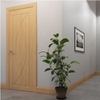 Internal Doors
Internal Doors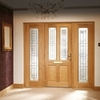 External Doors
External Doors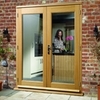 Patio & French Doors
Patio & French Doors Frames, Skirtings & Accessories
Frames, Skirtings & Accessories Format
Format Alexander & Wilks
Alexander & Wilks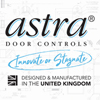 Astra Door Controls
Astra Door Controls Atlantic Hardware
Atlantic Hardware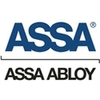 Assa Abloy
Assa Abloy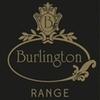 Burlington
Burlington Carlisle Brass
Carlisle Brass Delamain
Delamain Eurospec
Eurospec Fingertip Design
Fingertip Design Forme
Forme Fortessa
Fortessa From The Anvil
From The Anvil From The Anvil Home & Garden
From The Anvil Home & Garden From The Anvil Lighting
From The Anvil Lighting Fulton & Bray
Fulton & Bray Hafele
Hafele Heritage Brass
Heritage Brass Jedo
Jedo Mediterranean
Mediterranean Old English
Old English Rosso Tecnica
Rosso Tecnica Senza Pari
Senza Pari Serozzetta
Serozzetta Sorrento
Sorrento Status
Status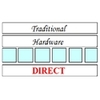 Traditional Hardware Direct
Traditional Hardware Direct Zoo Hardware
Zoo Hardware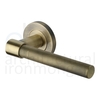 Lever Handles On Roses
Lever Handles On Roses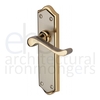 Lever Handles On Backplates
Lever Handles On Backplates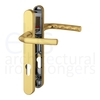 Multi-Point Lock Furniture
Multi-Point Lock Furniture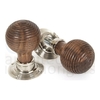 Knob Handles On Roses
Knob Handles On Roses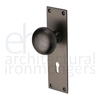 Knob Handles On Backplates
Knob Handles On Backplates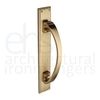 Pull Handles
Pull Handles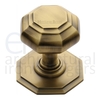 Centre Door Knobs
Centre Door Knobs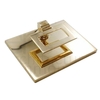 Edinburgh Pattern Handles
Edinburgh Pattern Handles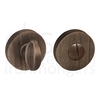 Bathroom Turns
Bathroom Turns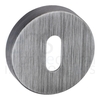 Escutcheons
Escutcheons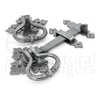 Traditional Latch Sets
Traditional Latch Sets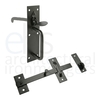 Gate Handles & Catches
Gate Handles & Catches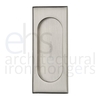 Flush Handles
Flush Handles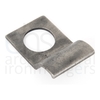 Cylinder Pulls
Cylinder Pulls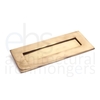 Letter Plates & Accessories
Letter Plates & Accessories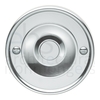 Bell Pushes
Bell Pushes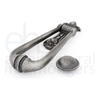 Door Knockers
Door Knockers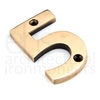 Door Numerals
Door Numerals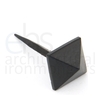 Door Studs
Door Studs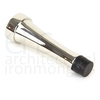 Door Stops
Door Stops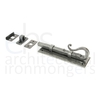 Surface Door Bolts, Espagnolettes & Sockets
Surface Door Bolts, Espagnolettes & Sockets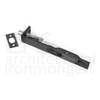 Flush Door Bolts
Flush Door Bolts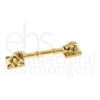 Cabin Hooks
Cabin Hooks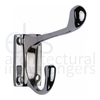 Coat Hooks
Coat Hooks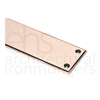 Finger & Kick Plates
Finger & Kick Plates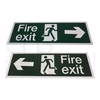 Signage
Signage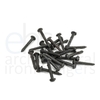 Accessories & Spares
Accessories & Spares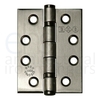 Door Hinges
Door Hinges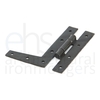 Decorative Hinges
Decorative Hinges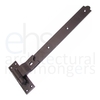 Gate Hinges
Gate Hinges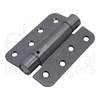 Spring Hinges
Spring Hinges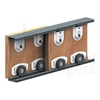 Sliding & Folding Gear
Sliding & Folding Gear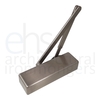 Overhead Door Closers
Overhead Door Closers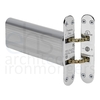 Concealed & Transom Door Closers
Concealed & Transom Door Closers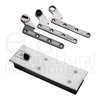 Floor Springs, Pivots & Accessories
Floor Springs, Pivots & Accessories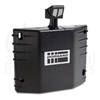 Holders, Restrictors & Selectors
Holders, Restrictors & Selectors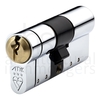 Cylinders
Cylinders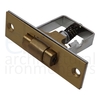 Roller Catches
Roller Catches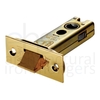 Latches
Latches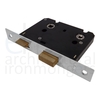 Bathroom Locks & Deadbolts
Bathroom Locks & Deadbolts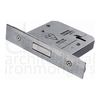 Deadlocks
Deadlocks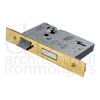 Sashlocks
Sashlocks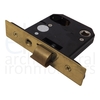 Mortice Nightlatches
Mortice Nightlatches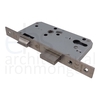 Euro Standard DIN Locks
Euro Standard DIN Locks ASSA Modular Lock Cases
ASSA Modular Lock Cases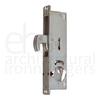 Metal Door Locks & Accessories
Metal Door Locks & Accessories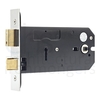 Horizontal Locks & Latches
Horizontal Locks & Latches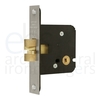 Sliding Door Locks
Sliding Door Locks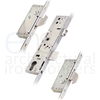 Multi-Point Locks
Multi-Point Locks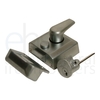 Rim Nightlatches
Rim Nightlatches Rim Locks
Rim Locks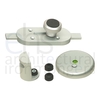 Cubicle Slide & Turn Bolts
Cubicle Slide & Turn Bolts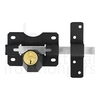 Gate, Garage & Shutter Locks
Gate, Garage & Shutter Locks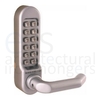 Access Control
Access Control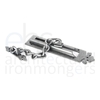 Secondary Door Security
Secondary Door Security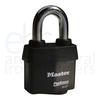 Padlocks, Padbolts, Hasps & Chain
Padlocks, Padbolts, Hasps & Chain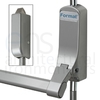 Panic Hardware
Panic Hardware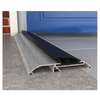 Threshold Seals
Threshold Seals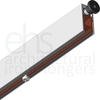 Acoustic & Drop Down Seals
Acoustic & Drop Down Seals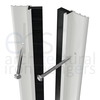 Perimeter Seals
Perimeter Seals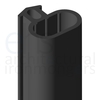 Joinery Seals
Joinery Seals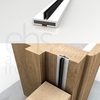 Intumescent Seals & Fire Products
Intumescent Seals & Fire Products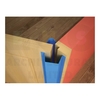 Finger Guards
Finger Guards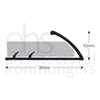 Floor & Carpet Trims
Floor & Carpet Trims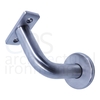 Grab Rails, Handrails & Brackets
Grab Rails, Handrails & Brackets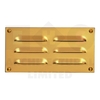 Ventilators
Ventilators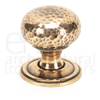 Cabinet Knobs
Cabinet Knobs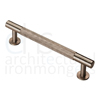 Cabinet Pull Handles
Cabinet Pull Handles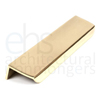 Cabinet Edge Pull Handles
Cabinet Edge Pull Handles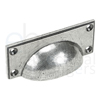 Cabinet Cup Handles
Cabinet Cup Handles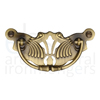 Cabinet Drop Handles
Cabinet Drop Handles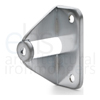 Cabinet Handle Accessories
Cabinet Handle Accessories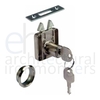 Cabinet Locks
Cabinet Locks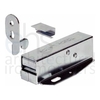 Cabinet & Magnetic Catches
Cabinet & Magnetic Catches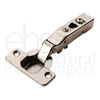 Cabinet Hinges
Cabinet Hinges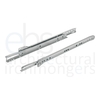 Drawer Runners
Drawer Runners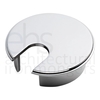 Cabinet Accessories
Cabinet Accessories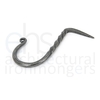 Cabinet & Cup Hooks
Cabinet & Cup Hooks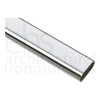 Wardrobe Rails & Fittings
Wardrobe Rails & Fittings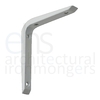 Shelving
Shelving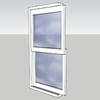 Sash & Case Fittings
Sash & Case Fittings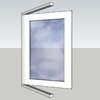 Casement Window Fittings
Casement Window Fittings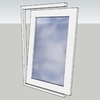 Espagnolette & Tilt Turn Fittings
Espagnolette & Tilt Turn Fittings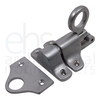 Fanlight Fittings
Fanlight Fittings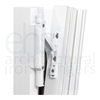 Window Restrictors
Window Restrictors Universal Window Security
Universal Window Security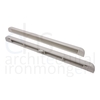 Slot & Trim Vents
Slot & Trim Vents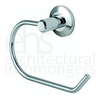 Bathroom Accessories
Bathroom Accessories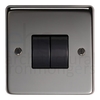 Switches & Sockets
Switches & Sockets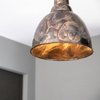 Lighting
Lighting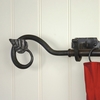 Curtain Fittings
Curtain Fittings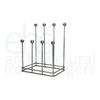 Boot Racks
Boot Racks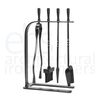 Fireplace Fittings
Fireplace Fittings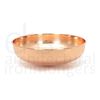 Architectural Metal Sinks
Architectural Metal Sinks Architectural Metal Plant Pots & Vases
Architectural Metal Plant Pots & Vases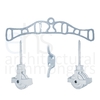 Traditional Laundry Pulley Fittings
Traditional Laundry Pulley Fittings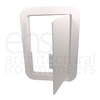 Plastic Access Panels
Plastic Access Panels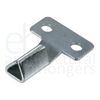 Meter Box & Radiator Keys
Meter Box & Radiator Keys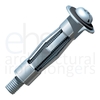 Screws & Fixings
Screws & Fixings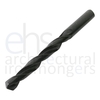 Drills For Metal
Drills For Metal Drills For Wood
Drills For Wood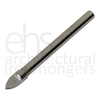 Drills For Glass & Tiles
Drills For Glass & Tiles Drills For Brick & Block
Drills For Brick & Block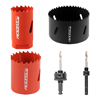 Hole Saws & Arbours
Hole Saws & Arbours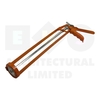 Caulking Guns
Caulking Guns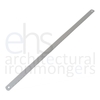 Knives, Scrapers & Blades
Knives, Scrapers & Blades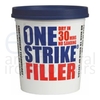 Fillers & Caulks
Fillers & Caulks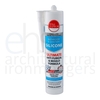 Sealants & Silicones
Sealants & Silicones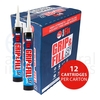 Adhesives
Adhesives Foam & Accessories
Foam & Accessories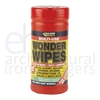 Wipes & Cleaning Materials
Wipes & Cleaning Materials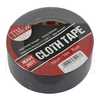 Tapes
Tapes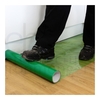 Surface Protection
Surface Protection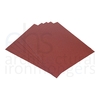 Abrasives
Abrasives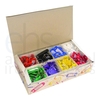 Plastic Key Tallies With Write On Labels
Plastic Key Tallies With Write On Labels

